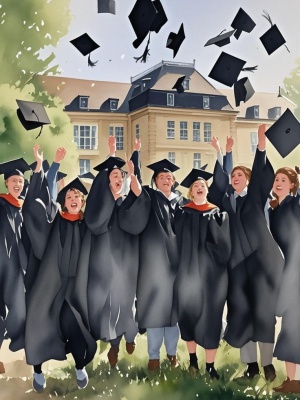The Art of Chinese Watercolor: A Timeless Tradition
Chinese watercolor, known as "shui-mo hua" (水墨画) in Mandarin, is one of the most revered art forms in Chinese culture. With a history spanning over two millennia, this delicate yet expressive medium captures the essence of nature, philosophy, and human emotion. Unlike Western watercolor techniques, Chinese watercolor emphasizes harmony, balance, and the fluidity of brushstrokes. In this article, we explore the rich heritage, techniques, and modern adaptations of Chinese watercolor.
1. The Historical Roots of Chinese Watercolor
The origins of Chinese watercolor can be traced back to the Han Dynasty (206 BCE–220 CE), where it was used for calligraphy and simple illustrations. By the Tang (618–907) and Song (960–1279) dynasties, it had evolved into a sophisticated art form, often depicting landscapes, flora, and fauna. Artists like Wang Wei and Guo Xi pioneered techniques that emphasized the spiritual connection between humans and nature.
Key characteristics of traditional Chinese watercolor include:
- Use of ink and water on rice paper or silk
- Minimalist compositions with "empty space" (留白) to evoke contemplation
- Brushwork that varies from delicate lines to bold strokes
2. Core Techniques in Chinese Watercolor
Brushwork Mastery
The brush is the soul of Chinese watercolor. Artists train for years to perfect techniques like "cun" (皴), which creates texture for mountains, or "dian" (点), used for foliage. The pressure, angle, and speed of the brush determine the artwork's vitality.
Ink Gradation
Unlike Western watercolors, Chinese artists often use monochromatic ink diluted to five shades: "jiao" (焦, dry), "nong" (浓, thick), "zhong" (重, heavy), "dan" (淡, light), and "qing" (清, clear). This gradation adds depth without color.
Composition Principles
Inspired by Daoism, compositions follow the "Three Distances" (三远) rule:
- High Distance (高远): Viewing from below, emphasizing height
- Deep Distance (深远): Layered peaks suggesting depth
- Level Distance (平远): Horizontal vistas for tranquility
3. Modern Adaptations and Challenges
While traditional Chinese watercolor remains revered, contemporary artists face challenges in preserving its authenticity while adapting to modern tastes. Some solutions include:
| Problem | Solution |
|---|---|
| Declining interest among youth | Digital tools like AI painting guides to blend tradition with technology |
| Limited preservation of fragile works | High-resolution scanning and AI photo restoration techniques |
| Global accessibility | Online galleries and tutorials, such as virtual exhibitions |
4. Chinese Watercolor in the Digital Age
Today, platforms like MediaAI.Art leverage AI to reinterpret classical techniques. For instance, their portrait-to-art feature transforms photos into watercolor-style images, making the art form accessible to beginners. Meanwhile, traditionalists argue that AI cannot replicate the meditative process of hand-painted strokes.
5. Learning Chinese Watercolor: A Beginner’s Guide

For those inspired to try Chinese watercolor, here’s a simplified approach:
- Materials: Rice paper, ink stick, brush, and ink stone
- Practice Strokes: Start with bamboo stalks (simple vertical/horizontal lines)
- Study Masters: Copy works from the Song Dynasty for foundational skills
For deeper insights, the Wikipedia page on ink wash painting offers scholarly references.
Conclusion: A Living Art Form
Chinese watercolor is more than a technique—it’s a philosophy that celebrates impermanence and harmony. Whether through traditional brushwork or digital innovations like AI-generated art, its essence endures. By embracing both history and modernity, this art form continues to inspire generations.